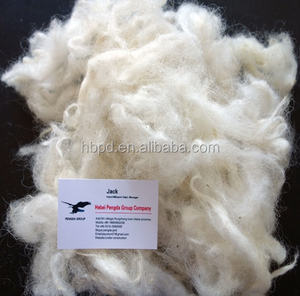Exploring the Different Kinds Of Cashmere a Natural Fiber for Ultimate Deluxe
Cashmere, a natural fiber, is frequently connected with high-end and comfort. Nonetheless, not all cashmere is created equal. From the richly soft Mongolian range to the lightweight heat of Indian Pashmina, each kind offers its own distinct attributes and attraction. The a lot more affordable Chinese cashmere, the conventional Scottish version, and the high-end Italian blend, all tell a different story of this remarkable fiber. As we untangle the globe of cashmere, a deeper understanding of its real worth and sophistication begins to emerge.
Recognizing the Lavish Nature of Cashmere
Cashmere, usually associated with deluxe and comfort, holds an one-of-a-kind appeal in the world of natural fibers. Unlike other natural fibers, cashmere combines insulation with breathability, providing unrivaled convenience throughout differing temperature levels. Its shiny coating and soft structure add to its premium appeal, validating the premium cost that commonly comes with cashmere garments.
Simply What Is Cashmere and Where Does It Come From?

Cashmere is obtained from the soft undercoat of cashmere goats, largely discovered in Mongolia, China, Iran, and Afghanistan. This thorough process adds to the shortage and high expense of cashmere. With its origin in the harsh landscapes of Asia, cashmere is a testament to nature's capacity to create luxury from misfortune.
Decoding the Different Sorts Of Cashmere
Recognizing the different types of cashmere is vital to valuing the quality and distinct attributes of this glamorous material. Normally, cashmere is categorized into 3 types: raw, virgin, and reused. Decoding these kinds is the first step in understanding the exclusivity and worth of cashmere.

The Distinct Features of Each Sort Of Cashmere
Having discovered the various categories of cashmere, it ends up being noticeable that each type flaunts its distinct collection of features. Mongolian cashmere, for circumstances, is renowned for its exceptional high quality, due to Mongolia's rough winters months that create longer and finer fibers. Alternatively, Chinese cashmere is frequently more affordable, though its much shorter fibers can minimize sturdiness.
Why Cashmere Is the Embodiment of High-end in vogue
Cashmere holds a prestigious position in the world of style, pertained to as a sign of luxury and class (is cashmere a natural fiber). Cashmere is derived from the fine cashmere fibre undercoat of Himalayan goats, known for their superior quality fiber. Cashmere's unmatched comfort and sturdiness make it a sought-after product in the development of premium garments.
The Refine of Making Cashmere: From Goat to Garment
The journey of cashmere, from being an undercoat of a Himalayan goat to a luxurious garment, is a complex one. This mix is then meticulously separated, with just the soft down utilized for cashmere. read From goat to garment, each step is a testament to the ability, creativity and persistence involved in crafting cashmere.

Verdict
To conclude, cashmere, with its all-natural beauty and unmatched comfort, preponderates on the planet of high-end style. The variety in types, varying from the soft Mongolian, lightweight Indian Pashmina, budget-friendly Chinese, traditional Scottish, to the vivid Italian, reveals the versatility of this all-natural fiber. The meticulous process of transforming it from a goat to a garment even more contributes to its exclusivity, making cashmere the embodiment of class and deluxe.
Cashmere, an all-natural fiber, is commonly associated with deluxe and convenience (is cashmere a natural fiber).Cashmere, often connected with high-end and comfort, holds an unique appeal in the that site world of natural fibers. Unlike other all-natural fibers, cashmere combines insulation with breathability, providing unparalleled convenience across varying temperatures. Cashmere is acquired from the soft undercoat of cashmere goats, mostly found in Mongolia, China, Iran, and Afghanistan. Cashmere is obtained from the great undercoat of Himalayan goats, understood for their superior quality fiber